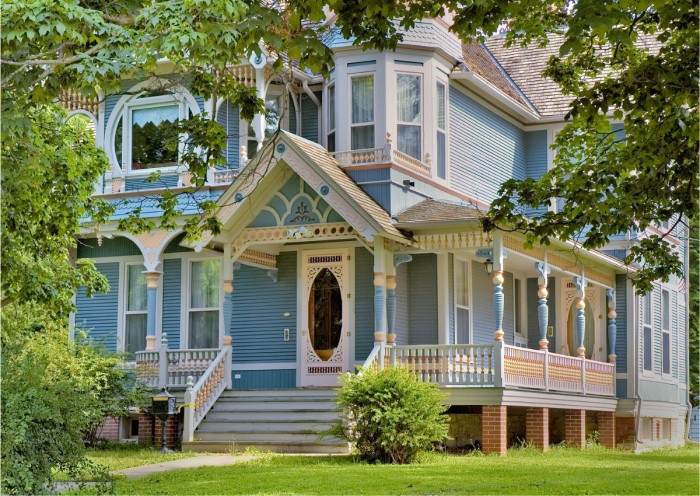Unveiling the past: Your free step-by-step guide to get the most out of your home history research
Have you ever wondered about the history of your home? Who lived there before you? What interesting events took place in your home's past? Your house has a story to tell, and uncovering its history can be one of the most gratifying journeys you embark on.
June 6, 2023
Have you ever wondered about the history of your home?
Have you ever wondered about the history of your home? Who lived there before you? What interesting events took place in your home's past? Your house has a story to tell, and uncovering its history can be one of the most gratifying journeys you embark on.
We'll explore different ways to search your house history, from census records, building permits, land records, local history, and online resources to talking to neighbors and visiting your local historical society.
Join us as we dive into your house’s history and discover the stories that have shaped it into the place you call home today.
Starting your home history search
To streamline the search for your home's history, it's essential to begin with an outline to structure your research. If you’re like us, you’ll find yourself going down all the rabbit holes.
To help you, HouseNovel has designed a system that allows you to document your findings in chronological order, with basic property details at the top for easy reference. For example, check out this home's history in south Minneapolis.
Before proceeding with your research, we recommend searching our database to see if anyone else has documented the history of your home. If not, you can add your home and then continue with your research.
To help you uncover all of your home's past, consider the following questions. While some questions are easy to answer, others may require a little more time and effort.
Outline of home history research:
1) Why was my house built here? (If it’s really unique, why did someone move my house here?)
2) What was the cultural or social context of the time when my house was built?
3) When was my house built?
4) Who built my house?
5) Has my house undergone any renovations or additions?
6) What architectural style is my house?
7) Who designed my house?
8) What was the original purpose of my house (e.g. residential, commercial, etc.)?
9) How do I find past homeowners of my house?
10) Are there any notable events or stories associated with my house?
11) Has my house ever been used for any significant events or gatherings?
12) Who were some notable residents of my house or the surrounding neighborhood?
Online property research is a great place to start
You can use the resources we’ve outlined below to find information about your home's history, including any previous owners or renovations. With the wealth of information available online, you can often make significant progress in your research without even having to leave your house.
However, online research may only get you so far, and you may need to physically visit historical societies or libraries to find more detailed information. Historical societies often hold archives of local historical records and can provide you with more context about the history of your home and the architect who designed it. Some historical societies can do research on your behalf for a fee, usually around $20/hour - but if you have the time it's more fun to go and explore the records yourself. Oftentimes, you'll find something you never expected to find!
Finally, don't underestimate the value of talking to previous owners or neighbors. They may have valuable information about the history of your house or know someone who does. A friendly conversation with your neighbors can provide you with fascinating insights into the history of your home and the surrounding community.
Researching the history of your house can be a multi-faceted process. Utilizing online resources, visiting historical societies, and talking to previous owners or neighbors can all provide valuable information. So, roll up your sleeves and get ready to embark on this exciting journey of discovery!
A quick guide to home history online resources - We’ve found a lot of great online resources for home history information, but it’s really dispersed and can be a bit hard to find so be prepared to really dig into all of these. Here is a rundown of the best resources so far, and we'll keep adding to the list as we come across new ones.
1) Library Systems – Start here, the library systems in America have done an incredible job of digitizing everything they can get their hands on. Also, check out our full article on how to use digital collection resources.
a. County level – Search for your county public library system and find the Digital Collections to search for old photos of your house. For the most part, all library systems run on the same software. Type in your address without the “avenue” or “street” to see if anything pops up, also try just the street name. Including the address doesn’t always happen when people donate photos, you’ll have to get creative with your searches.
Hipstorian Tip: If you want to do a generalized search for homes in your area, use “residence” instead of home or house. We're based out of Minnesota, and our Hennepin County Library System has home photos, building permits, plat and zoning maps, architectural plans, city directories, yearbooks, and newspaper articles. It’s amazing the property records you can find just by exploring the digital collections of your library system.
b. Digital Public Library of America (DPLA) – Discover 47 million images, text, videos, and sounds from across America. They have partnered with various libraries and universities across the nation into one searchable portal with the largest being the National Archives and Records Administration. Note: they link you to the partner's page and some library systems have those pesky watermarks on them.
c. Library of Congress – We’ve done some of the legwork for you on this one by loading all the home images with addresses from the LOC database into HouseNovel. They have a ton of home photos that have intersections that we didn’t bring in, so this is a great work resource to work through.
d. National Archives – NARA, which stands for the National Archives and Records Administration, serves as the official custodian of the nation's records. Out of all the records and materials generated in the course of the U.S. federal government's operations, only a small fraction (1%-3%) are deemed significant enough for legal or historical purposes to be preserved by NARA indefinitely.
These important records are safeguarded and can be accessed by the public, whether you're seeking to uncover family history, verify a veteran's military service, or delve into a topic of historical interest.
2. Newspapers.com – We can't say enough good things about this website. This is one of our favorite resources because it offers a unique way to uncover news articles related to your house. In the past, whenever someone's name was mentioned in a newspaper, the article would usually include their address. This practice ceased in the 1980s, but it's also an incredibly valuable tool for discovering other types of information about your home. This website can also be a valuable resource for researching previous residents who lived in your home.
Hipstorian Tip: We recommend that you save this resource until you collect the names of all the previous occupants of your home - then you can take advantage of Newspapers' one-week free trial to thoroughly investigate and gather information on your property and its former residents. Be sure to cancel the subscription before the trial period ends to avoid incurring any costs.
3. MLS Websites:
a. Zillow – Zillow is a popular online real estate marketplace that provides information on homes, apartments, and other types of real estate across the United States. It allows users to search for properties based on various criteria such as location, price, and size and provides estimates of home values, rental prices, and other information related to the real estate market. A great resource for base facts including year built, square feet, bedroom, and bathroom, and has quite a bit of sales history.
b. Realtor.com – Similar to Zillow, this website provides home photos and information, and sometimes even has historical listing photos!
4. Property Data Websites - We rely on two websites, Ownerly and NeighborWho, to locate past property owners when conducting our research. These sites not only provide historical sales data but also offer a valuation tool. Real estate data can be expensive, but these companies have found a way to make it accessible to the public. By purchasing bulk data and then selling it back to users at a nominal cost, they provide a cost-effective solution for accessing valuable property information.
Hipstorian Tip: If you're looking for a fast and straightforward method to gather information about previous property owners, this service may be a useful option. With a trial fee of just $1, it can be an excellent value. However, it's worth noting that some users have reported issues with canceling before the monthly subscription kicks in, so it's essential to be cautious and ensure that you successfully cancel your subscription if you no longer wish to use the service.
5. County Accessors Office – This is a great place to find an Addition Name (subdivision or development), Lot, and Block, which can be used to when searching the plat maps at the Library.
6. Census Information – In 2022, The U.S. government released the 1950 census with personally identifiable information for the first time. The 1950 Census was the 16th decennial census of the United States and was conducted on April 1, 1950. It was designed to collect data on the population, housing, and economy of the country. The Census Bureau used the data to make decisions about government programs, funding, and legislative representation. The 1950 Census was the first census to use a UNIVAC computer for data processing, which was a significant technological advancement at that time. To go more in-depth on the US Census and home history research, check out our article here.
Hipstorian Tip: This technique works for any of the Census years, but we'll use 1950 as an example. We’ve found the easiest way to find information on the US Census pages you are looking for is by not even going to the National Archives. Here's how we do it:
a) Go to https://stevemorse.org/census/unified.html
b) You’ll select your State, County, City or Town, House Number, and Street
c) This will bring up the 1950 ED numbers corresponding to your location
d) Click “more details.”
e) This will give you a description of the boundaries of the ED
f) Click on the ED
g) It will ask you to select the viewer you want to use, you can either use the NARA (National Archives) viewer or FamilySearch Viewer for free. Personally, we use the FamilySearch viewer because it’s easier to zoom in to see the tiny print.
7. State and local historical societies – The state historical societies usually have a similar website to the library, so look for the Digital Collections. We’ve had a lot of success pulling old photos of houses and buildings because of the effort of commercial photographers in the early 1900s to take photos of their projects or houses for sale.
Hipstorian Tip: There are likely three to four tiers of historical societies in each state, starting with statewide, county, city, and down to neighborhood counsel or preservation societies. Statewide and county are going to have the resources to digitize their records, and potentially cities depending on the size. As the organizations get smaller they may have some records online but generally, you can email or call them if you are looking for something specific.
8. College and University architecture departments – A great resource for getting more information on the specific architect. It should be noted that most homes in America were built on plans ordered out of a catalog of designs. We’ve actually had more luck finding the plans at the library but if you own a very special house, it may have been designed by a notable architect, and they may have information on it for you.
9. Racial Covenants – In Minneapolis, there has been a huge push to identify racial covenants in housing throughout the city and surrounding areas. Racial covenants are clauses that were inserted into property deeds to prevent people who were not white from buying or occupying the land. The University of Minnesota has a great project dedicated to this issue, and your area or city might as well.
10. National Register of Historic Places – Created by the National Historic Preservation Act of 1966 and is managed by the National Park Service. The purpose of the list is to help people work together to identify, evaluate, and safeguard America's historical and archaeological treasures. You can search the list in a few different ways:
a. The NPGallery Digital Asset Search – This is a broad search option if you want to take a look at items in your city and state. There is also a Resource Name search if you know the defined name for the historic properties.
b. Spreadsheet of NRHP Listed properties – You can then filter by city and see all at once the various properties, then you can copy and paste the external link into your web browser to take you right to it. The link to download the database is halfway down the webpage.
Hipstorian Tip: If your home is within a historic district most likely they have a photo survey documenting the historic properties in the area. This will not be searchable, so you’ll have to page through the PDF but you might find a photo of your house. We did this for Edina's Country Club District and pulled out each home’s photo and posted it on their HouseNovel Home Profile.
11. Genealogy Websites - Here are numerous online resources dedicated to genealogy where you can find more information on the people who lived in your house:
a. Ancestry.com - A popular genealogy, and family history website that also builds a fun family tree
b. FamilySearch.org - A non-profit genealogy website
c. MyHeritage.com - A popular genealogy and family history website
Hipstorian Tools:
a) Snipping Tool – This is standard on most PCs, and Macs have an equivalent. It lets you take a snippet of your screen and turns it into a photo.
b) Scanners – We use the Fujitsu ScanSnap IX-1400. This is an awesome compact scanner that works great for both photos and documents, and it’s so fast! We scanned over 2,000 historic home listing sheets and it was a breeze. Highly recommend.
Now that you got the lay of the land from some of the online resources, let’s answer some of the questions.
Why was my house built here? (or if it’s really unique, why did someone move my house here?)
When we buy a house, we often think about the structure itself and its features, but we rarely consider the history of the land it's built on. However, understanding the history of the land can help us better appreciate the environment around us and the significance of the area. Let's explore what you need to know about the history of the land your house is built on.
Research the land's original use - Start your investigation by researching the original use of the land. Was it farmland or forest? Was it part of a larger estate or owned by a private individual? Understanding how the land was originally used can give you a better understanding of the area's history.
Check local historical archives - Check with your local historical society, library, or archives for any information they may have on the area. This could include old maps, photos, or documents that describe how the land was used, who lived there, and what the area was like at the time.
Zoning regulations - The process for determining where housing is built in a city can vary depending on a variety of factors such as local zoning laws, land availability, community input, and government policies. Cities typically have zoning regulations that dictate what types of buildings can be built in different areas of the city. These regulations may specify that certain areas are reserved for residential use, while others are reserved for commercial or industrial use. Within residential zones, there may be further restrictions on the type, density, and height of housing that can be built. Zoning laws change over the years, so what once farmland on the outskirts of town, is now a suburb. Zoning changes from farm to residential development are usually documented in local newspapers.
Land availability - The availability of land can play a major role in where new housing is built. Cities may prioritize areas where there is unused or underutilized land that can be developed for housing.
Community input - City planners may gather input from residents, community organizations, and other stakeholders to determine where new housing should be built. This can involve public meetings, surveys, and other forms of engagement to identify areas where there is a need for housing, as well as concerns or preferences about the types of housing that should be built.
Government policies - Governments may develop policies and programs to encourage the development of housing in certain areas. For example, a city may offer tax incentives to developers who build affordable housing in designated areas.
Look for signs of past activity - Look around your property for any signs of past activity, such as old foundations or structures, gravesites, or even old wells. These can be clues that reveal a lot about the history of the land.
Talk to your neighbors - Your neighbors may have lived in the area for a long time and may have information about the history of the land that you don't. They may know about old landmarks or events that occurred in the area that could give you insight into the area's past.
Consider hiring a professional - If you're really interested in learning about the history of the land your house is built on, consider hiring a professional. There are specialists, such as historians or archaeologists, who can help uncover the history of your property and provide you with a more detailed picture of its past. We're also here to help!
Aerial Photography - An awesome resource we use for research in our state is the University of Minnesota's Historical Aerial Photos Online portal. You can see the land being developed over time and gives a look into the past, the aerial photos are categorized by area by decade from 1920 to 2000.
Understanding the history of the land your house is built on can provide you with a deeper appreciation for the area and its significance. It can also help you understand why the area may have changed over time, and how the past has influenced the present. By researching the land's original use, checking local historical archives, looking for signs of past activity, talking to your neighbors, and even hiring a professional, you can uncover the rich history of your property and learn more about the environment around you.
How to research: from our experience start with the public library in their digital collections and you’ll want to find research plat and zoning maps. In our research in Minnesota, we start from the beginning and try to figure out whose farm it was originally, then try to trace the various sales until it got formally developed into a plat of land for development.
Hipstorian Tip: This is an ongoing tip, but as soon as you find a name, like the original farmer, I always go to Newspapers.com to see if I can figure out more about the owner. Or when the land was sold.
What was the historical cultural or social context of the time period when my house was built?
Every house has a story, and one important part of that story is the cultural and social context in which it was built. Understanding the time period in which your house was constructed can help you appreciate its architecture and design, and give you insight into the way people lived and thought during that era. Let's dive into some ways to learn about the cultural and social context of the time period when your house was built.
Research the architectural style - The architectural style of your house can give you clues about the time period in which it was built. For example, Victorian-era homes are known for their ornate details, while mid-century modern homes are characterized by clean lines and minimalistic design. Do some research on the architectural style of your house and see what you can learn about the time period in which it was popular.
Learn about the local history - The history of the area where your house is located can also give you insight into the cultural and social context of the time period in which it was built. Check out local history books, museums, or historical societies to learn about what was happening in the area during the time period your house was constructed. This can include significant events, such as wars or economic changes, as well as cultural trends and social norms.
Look at historical photographs and documents - Another way to learn about the cultural and social context of the time period when your house was built is to look at historical photographs and documents. Check out old newspapers, magazines, and photographs from the time period and see what you can learn about the fashion, technology, and social norms of the era. You can also look for documents related to your house, such as blueprints or building permits, to learn more about the design and construction process.
Talk to older residents in the area - Finally, talking to older residents in the area can be a great way to learn about the cultural and social context of the time period when your house was built. They may have personal memories or stories that can shed light on what life was like during that era. You can also ask them about changes they've seen in the area over the years and how the community has evolved.
Learning about the cultural and social context of the time period when your house was built can be a fascinating and rewarding experience. By using these tips, you can gain a deeper appreciation for your home's history and the way people lived and thought during that era.
When was my house built?
Knowing the age of your home can help you better understand its architectural style, construction methods, and historical context. You may be saying, the year my house was built can be easily found on Zillow, very true. But here are some alternative ways to search for your house history.
Search for clues in your house's architecture - One of the easiest ways to determine the age of your home is to examine its architectural style. Different architectural styles were popular during different time periods, so if you can identify the style of your home, you can narrow down its age range. For example, a Victorian-style home was likely built between 1837 and 1901, while a ranch-style home was popular in the 1950s and 1960s.
Check public records - Many cities and towns keep public records of building permits and inspections, which can help determine when your home was built. You can visit your local building department or historical society to access these records. If your home has undergone renovations or additions, you may be able to find permits for those as well, which can help you piece together a timeline of your home's history.
Consult historical maps - Historical maps can be a valuable resource for determining when your home was built. Many libraries and historical societies have collections of maps that show the development of different neighborhoods over time. By comparing maps from different time periods, you may be able to determine when your home was first built.
Research the builder or architect - If you can identify the builder or architect of your home, you may be able to find information about when it was constructed. Some builders or architects have archives of their work, which may include information about the dates of construction.
Look for clues in the building materials - The materials used to construct your home can also provide clues about its age. For example, homes built before the 1950s often used plaster walls, while those built in the mid-20th century used drywall. Similarly, the type of wiring or plumbing used in your home can help you narrow down its age range.
Who built my house? Finding a homes building permit
The answer lies in finding the original building permit for your house. Hennepin County has digitized all their historic building permits for Minneapolis which makes it incredibly easy to find online. An example of the historical building permit is shown below.
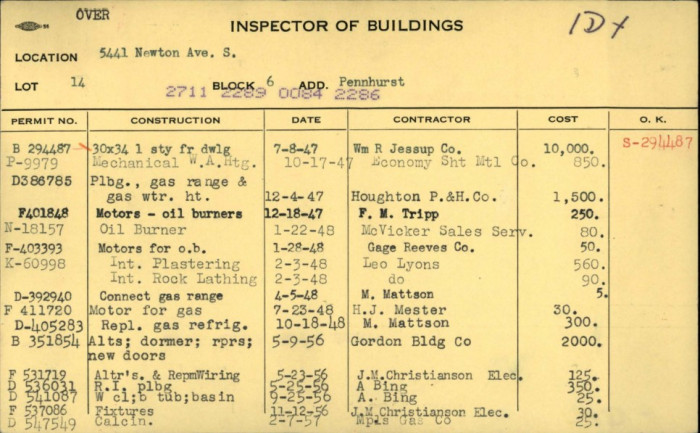
If your county library system hasn’t done this yet you should email your local building inspector’s office and ask for the building permits for your house.
Here is an example of an email we've used:
Hi There -
I'm putting together my home's history and would like to know if you could send me the original building permit for our house at (insert address). Or could you point me in the right direction to get a copy of the original permit from (insert year built)?
Thanks! (insert your name)
Hipstorian Tip: This is an ongoing tip, but as soon as you find a name, like the original builder, I always go to Newspapers.com to see if I can figure out more about the builder and the homes they built.
Has my house undergone any renovations or additions?
As a homeowner, it's important to keep track of any renovations or additions that have been made to your house over the years. Knowing the history of your property can not only help you understand its current value, but it can also provide insight into any potential issues or maintenance needs that may arise in the future.
If you're not sure whether your house has undergone any renovations or additions, here are a few things to look for:
Check the building plans and permits: If your house was built in the last few decades, there may be building plans and permits on file with your local government. These documents will show any renovations or additions that were made to the property, and they may also provide information about the contractors and materials used.
Look for signs of remodeling: Even if there are no building plans on file, you may be able to tell if your house has undergone any renovations or additions simply by looking around. For example, if there are different types of flooring or wall finishes in different parts of the house, it could be a sign that those areas were remodeled or added on at some point.
Ask previous owners or neighbors: If you've recently purchased the house, you may be able to get information about any renovations or additions from the previous owners. Alternatively, your neighbors may be able to tell you if they remember any construction work being done on the property.
Hire a professional home inspector: If you're still unsure whether your house has undergone any renovations or additions, you may want to hire a professional home inspector. They will be able to examine the property and identify any changes that have been made over the years.
Once you have a better understanding of any renovations or additions that have been made to your house, it's important to keep this information in mind as you make any future home improvements or repairs. For example, if you're planning to replace the roof, you'll want to know whether it was added as part of a previous renovation or if it's the original roof from when the house was built. This information can help you make more informed decisions about materials and contractors, and it can also help you plan for any additional costs or challenges that may arise.
What architectural style is my house?
Discovering the architectural style of your home can give you a glimpse into the history and character of the house. Different architectural styles were popular during different periods in history and often reflect the cultural and social influences of the time. This will also give you clues into the next question of who designed my house.
Here are some common architectural styles and the features that define them:
Colonial - Colonial-style homes were popular in America from the 1600s to the mid-1800s. These homes are typically characterized by symmetrical designs, steep roofs, and a central chimney. Windows are often arranged in pairs and the front door is typically located in the center of the house.
Victorian - The Victorian style was popular from the mid-1800s to the early 1900s. These homes are characterized by ornate details, such as intricate gingerbread trim, turrets, and wrap-around porches. Victorian homes often have asymmetrical designs and a variety of textures and materials, including brick, stone, and wood.
Craftsman - Craftsman-style homes were popular in the early 1900s. These homes are characterized by their emphasis on handcrafted details and natural materials, such as wood and stone. Craftsman homes often have low-pitched roofs, wide eaves, and exposed rafters. They also often feature large front porches with tapered columns.
Mid-Century Modern: Mid-century modern homes were popular in the 1950s and 1960s. These homes are characterized by their clean lines, flat or low-pitched roofs, and large windows that blur the line between indoors and outdoors. Mid-century modern homes often feature an open floor plan and a strong connection to the surrounding landscape.
Ranch - Ranch-style homes were popular in the 1950s and 1960s. These homes are typically characterized by their single-story design, low-pitched roofs, and simple, functional layouts. Ranch homes often have an attached garage and a large backyard.
Contemporary - Contemporary homes are characterized by their clean lines, minimal ornamentation, and use of modern materials, such as concrete, steel, and glass. These homes often feature large windows, an open floor plan, and an emphasis on energy efficiency.
Who designed my house?
Now you’ve got the ball rolling and have probably found the original land owner, developer, or builder of your house through the original building permit. Most homes in America were built on plans ordered out of a catalog of designs. We’ve actually had more luck finding the plans at the library. But if you own a very special house, it may have been designed by a notable architect, and they may have information on it for you.
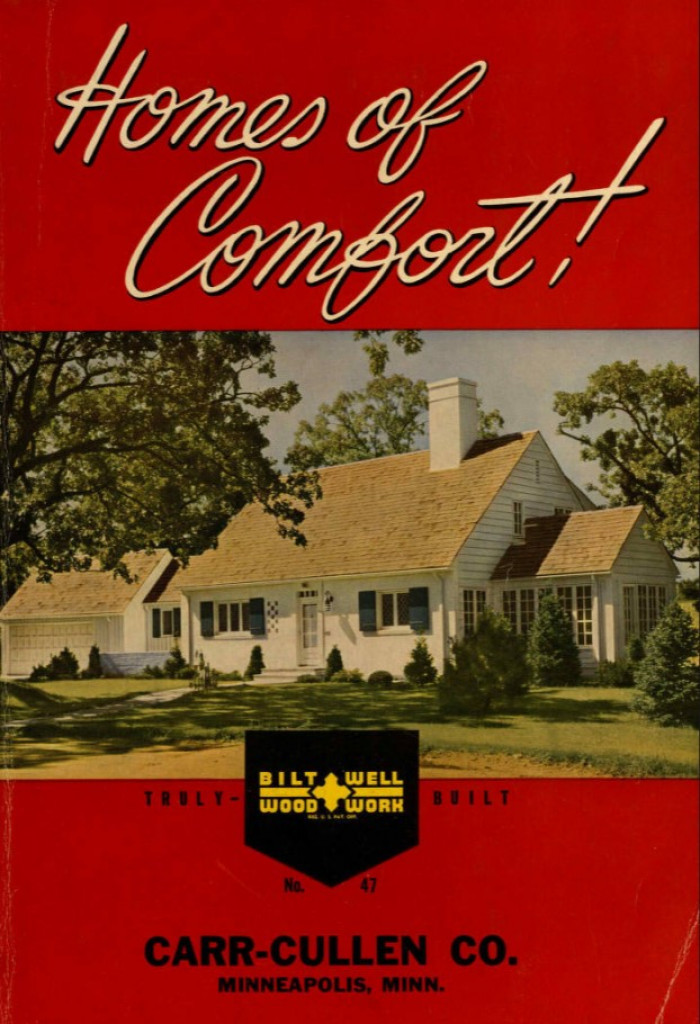
Check your deed or property records - Your deed or property records may have information about the architect or designer who created your house. Look for any documentation or paperwork related to the construction or purchase of your home.
Look for a signature or stamp - Sometimes, architects or designers will sign or stamp their work. Check the blueprints or any original drawings you may have for a signature or stamp that could identify the designer.
Research the style of your home - If you're not sure where to start looking for information about the designer of your house, start by researching the style of your home. Many architectural styles are associated with specific designers or periods of time, so this could provide you with a starting point for your search.
Ask neighbors or previous owners - If you're still not sure who designed your house, ask around. Your neighbors or previous owners may have information about the designer or architect who created your home.
Hire a professional architectural historian - If you're serious about finding out who designed your house, you may want to hire a professional architectural historian. They can research the history of your home and identify the architect or designer behind it.
Once you have a better understanding of who designed your house, you can begin to appreciate its unique style and history. You may also want to learn more about the designer and their other works to get a better sense of their aesthetic and approach to design.
What was the original purpose of my house (e.g. residential, commercial, etc.)
In the United States, large homes tend to go through a variety of transformations. From single-family to boarding or apartments or nursing homes. We also see schoolhouses, barns, and carriage houses converted into single-family houses or apartments depending on the area you live. As part of your historical research make sure to document what the original use of the building was, and the lives it’s lived throughout the years.
Hipstorian Tip - When you contact the city for historical building permits, they should send you a package of all building permits for the house. If your home has transformed over the years, this will hopefully show the paper trail of it.
How to find past owners of a house?
Discover the people who lived in your home before and you can help you better understand its history and add a personal connection to the space. Here are some tips for researching the previous owners of your house:
1) Start with public records - Begin your search by contacting your local county or city government office responsible for property records. In the United States, this is typically the county recorder's office or the assessor's office. Request access to the property's historical ownership records or deeds. These records often contain information about past owners, dates of ownership transfers, and sometimes even purchase prices.
2) Search online property databases - This is where Ownerly or Neigherwho may be helpful, they usually pull the past owners but may not have a complete ownership record. Historic city directors are also a great place to find previous homeowners, we found these at the library. In the past, it was common for newspaper articles to include the address of individuals mentioned. However, this practice ceased in the 1980s. Despite its discontinuation, this practice used to be a valuable tool for discovering information about your home.
3) Check tax assessment records - Local tax assessment records can also be helpful in identifying past owners. These records are often available through the local assessor office or tax collector's office. They might provide the names of individuals or entities responsible for property taxes in previous years.
4) Consult with neighbors or long-time residents - If you're interested in the recent history of the property, talking to neighbors or long-time residents of the area can be valuable. They might have knowledge of the previous owners or be able to provide leads on how to find more information.
5) Hire a title search company - If you're having difficulty locating past ownership records on your own, consider hiring a professional title search company. These organizations specialize in researching property ownership history and can provide comprehensive reports based on their findings.
6) Engage a real estate agent - Real estate agents, particularly those experienced in the local market, may have access to historical property records or know the best resources to consult. Reach out to a knowledgeable agent and ask for assistance in obtaining the past ownership information you're seeking.
Remember, the availability and accessibility of property records can vary depending on your location. Some jurisdictions may have more comprehensive and easily accessible records than others.
Hipstorian Tip - When conducting research on a home, we frequently utilize the HouseNovel profile's share button located in the upper right-hand corner of the home profile. This enables us to share the profile with previous homeowners, allowing them to upload photos or share their stories. The email will be sent from HouseNovel, including a note attached from you. We have discovered that this approach serves as a pleasant way to encourage past owners to share their valuable stories.
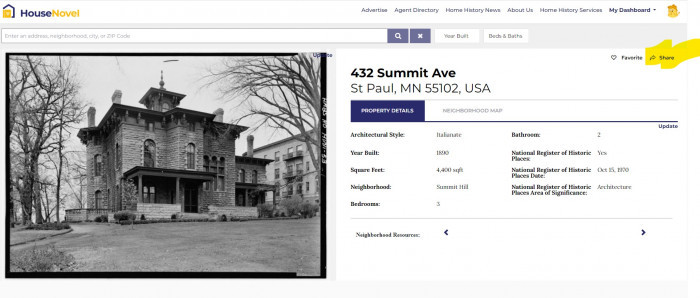
Are there any exciting events or stories associated with my house?
Your home is more than just a building. It has a history, and sometimes that history is rich with interesting events and stories that have taken place within its walls. Let's explore some ways to uncover the interesting events and stories associated with your house.
Check local newspapers: Local newspapers can be a great source of information about events that have taken place in your area. Look for articles about your house or the surrounding neighborhood and see if they mention any interesting events or stories.
Research the history of your house: The first step is to research the history of your house. This could include looking at old property records, maps, and photos. You can also check with your local historical society or library to see if they have any information about your house or the surrounding area.
Talk to your neighbors: Your neighbors may have lived in the area for a long time and may have information about the history of your house. They may know about interesting events or stories that have taken place there, or they may have heard stories from previous owners.
Consider hiring a professional: If you want to go deeper into your home's history, consider hiring a professional historian or researcher. We can help you uncover interesting stories and events associated with your house, as well as give you a complete picture of the area's history.
Look for physical evidence: Finally, look for physical evidence of interesting events or stories associated with your house. This could include old photos or letters, or even physical artifacts that were left behind by previous owners.
By uncovering interesting events and stories associated with your house, you can gain a deeper appreciation for the history of the area and the people who lived there before you. Whether it's a story of a famous resident, a notable event that took place, or even a spooky ghost story, your home's history can add a new dimension to your living experience.
Has my house ever been used for any significant events or gatherings?
If you are a homeowner or a renter, you might be curious about the history of your home and whether it has ever been used for significant events or gatherings. Maybe you have heard stories from your neighbors or family members about your home's past, or maybe you just have a feeling that there is more to your home's history than meets the eye.
Talk to your neighbors - One of the easiest ways to find out whether your house has a history of significant events or gatherings is to talk to your neighbors. They might have lived in the area longer than you have and can share stories or anecdotes about your home's past. Ask them if they have any knowledge of the home's history, or if they know of any significant events or gatherings that have taken place there.
Check historical records and archives - Another way to find out about the history of your home is to check historical records and archives. Many cities and towns have historical societies or archives that keep records of past events and gatherings, including those that may have taken place in your home. You can start by contacting your local historical society or visiting their website to see if they have any information on the history of your home.
You can also check online archives, such as newspapers, books, and census records. Many of these records are now digitized and can be easily accessed from home. Sites like Ancestry.com, FindMyPast.com, and FamilySearch.org can be great resources to find information on past events and gatherings.
Research the previous owners - You can also learn more about the history of your home by researching the previous owners. If you have the name of the previous owners, you can search online to see if they have any social media accounts or personal websites. You can also check public records to see if they were involved in any significant events or gatherings in the area.
Look for physical evidence - Finally, you can look for physical evidence of significant events or gatherings in your home. Check for any unusual architecture or design features that may have been added for a specific purpose, such as a stage or dance floor. You can also look for old photographs or other items that may have been left behind by previous owners.
Who were some notable residents of my house or the surrounding neighborhood?
When you move into a new house or neighborhood, you might be curious about the notable people who have lived there before you. Learning about the history of your home and community can be a fascinating and rewarding experience. Here are some tips to help you find notable residents of your house or the surrounding neighborhood:
Check historical records and archives - The first step to finding notable residents is to check historical records and archives. Many cities and towns have historical societies or archives that keep records of past residents, including notable ones. You can start by contacting your local historical society or visiting their website to see if they have any information on the history of your house or neighborhood.
Look for historical markers - Another way to find your home's notable residents is to look for historical markers in your neighborhood. These markers are typically placed at sites of historical significance and may include information about past residents. You can search for historical markers in your area online or by contacting your local historical society.
Visit local museums and historical sites - Visiting local museums and historical sites can be a great way to learn about the history of your house and neighborhood. Many museums have exhibits on local history and may include information on notable residents. You can also take guided tours of historical sites, which often include stories and anecdotes about past residents.
Talk to your neighbors - Your neighbors can be a great resource for learning about the history of your neighborhood. Ask if they know anything about past residents or if they have any stories or anecdotes to share. You can also join a local history group or neighborhood association to connect with other residents who share your interest in local history.
Hire a historian or genealogist - If you're having trouble finding information on notable residents, you may want to consider hiring a historian or genealogist. These professionals can help you research your house and neighborhood and may be able to uncover information that you wouldn't be able to find on your own.
Learning about the history of your house and neighborhood can be a fun and rewarding experience. By using these tips, you can uncover the stories of notable residents who once lived in your home or community.
Home History Services
If you find all of this information overwhelming, don't worry—we're here to help. We offer several comprehensive home history research packages, which you can learn more about by checking out our Home History Services! Now that you have all the home history resources in your toolkit, we hope you can't wait to put on your hipstorian investigator cap and start digging into your home's history today!
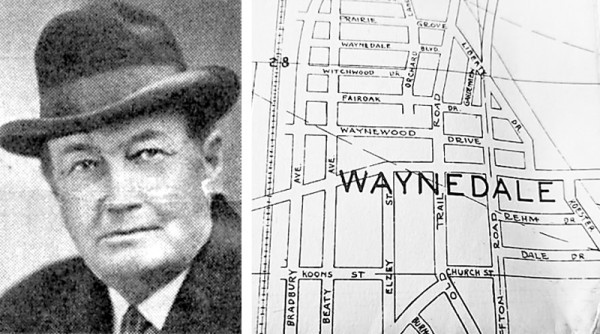
History of Waynedale Indiana
Explore and research the history of Waynedale Indiana
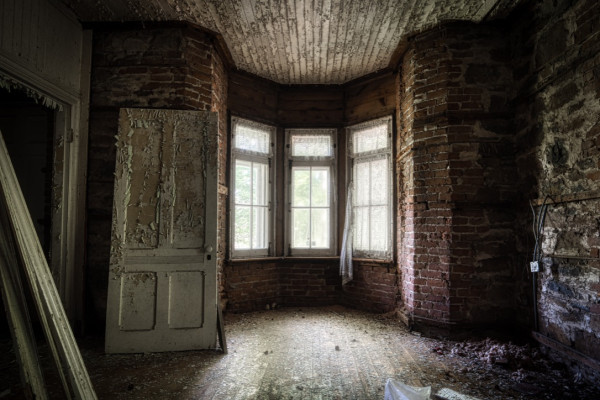
How to Renovate Abandoned Properties
During your life you have probably come across one or two abandoned properties you have considered buying or selling.
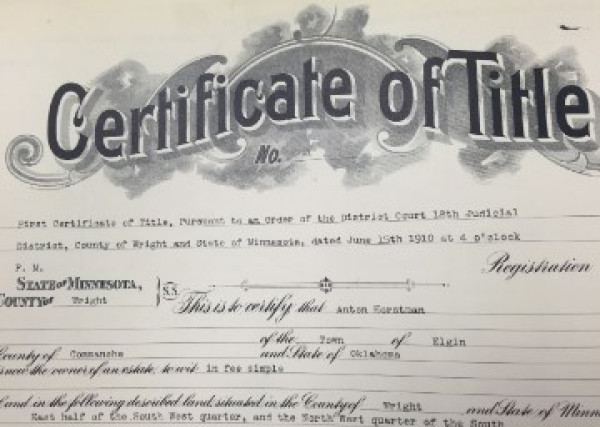
What's the different between a deed and title?
Unlocking Real Estate Jargon: Difference Between a Title and a Deed. In the complex world of property ownership, do you know the distinction between these two crucial terms?

Not the Up House—But Even Better: Edith Macefield Said No to $1 Million, So They Built a Mall Around Her
You may have heard about the one-bedroom house in Seattle that blocked a mall.
